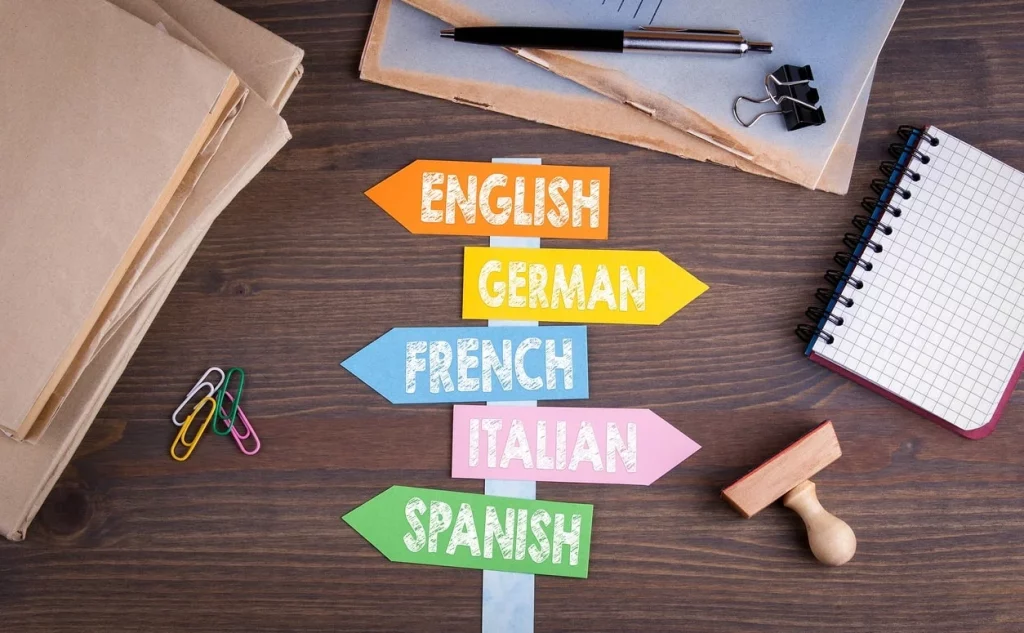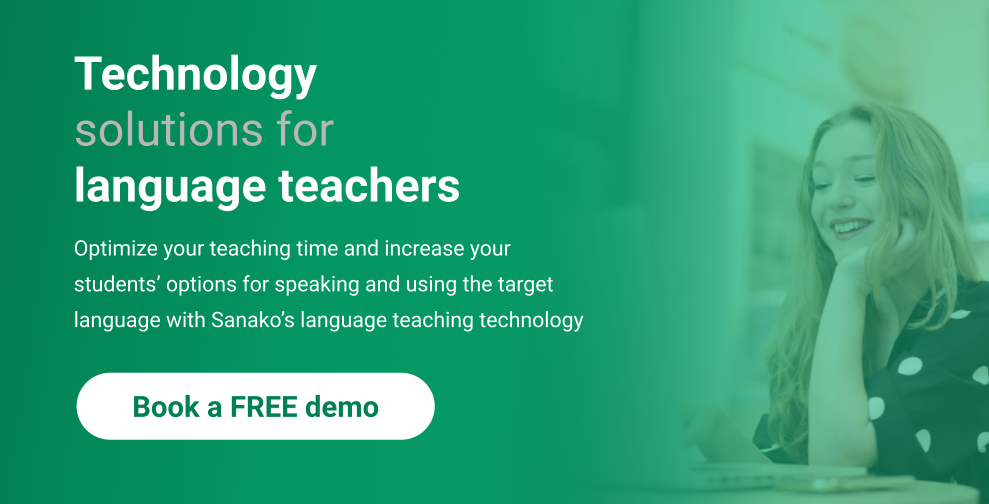As any language teacher knows, all language learners are different. So it’s logical to assume that personalizing your language teaching to help each individual student to maximise their potential would be a good way to help achieve their learning objectives.
Such personalization of learning and teaching is important for a number of reasons. It makes language learning more engaging and motivating for learners; it helps teachers position learning tasks as meaningful and relevant, plus it helps students make progress at a rate that stretches but doesn’t overwhelm them. This blog post therefore outlines eight highly effective techniques that teachers can deploy to personalise their lessons and boost students’ learning outcomes.
What is personalized teaching?
According to Bulger 2016, “personalized learning describes adaptation to a student’s unique combination of goals, interests, and competencies and the ongoing process of shifting instruction as these conditions change”. Furthermore Bulger is clear that ultimately all communications between human beings are inherently personalised since (most) people try to read and respond to each other’s interpersonal cues.
In their classrooms, teachers go one stage further and combine this:
“with their subject matter expertise, knowledge of how people learn, and knowledge of each student, to determine individual needs, adjusting their lessons in response to questions and behaviors.”
How to personalize language teaching in your classroom?
The following 8 ideas are easy to deploy in all language classrooms and for all types of learners. Give them a go and see what difference they make!
1. Get to know your students
In order to effectively personalise your language lessons, it’s essential that you know and understand your students. At the most basic level, this is about gathering basic information about their lives, their backgrounds and their motivations for learning a new language.
But teachers need to go much deeper than this to really get to know their students as expert language teacher David Dodgson explains:
“….I don’t simply mean getting to know some basic personal information about them or other people in their lives. I mean we really need to know what their interests are, what their personal views are, and what makes them tick. More importantly, we need to listen to what they say, react to it, and respond to it.”
This information can then be enhanced by careful classroom observation. Identify, for example, the students who prefer reading to writing and the ones that need to focus on the accuracy of their communication rather than fluency. These insights will enable language educators to plan their lessons effectively, adapting lessons to students’ preferences and opinions.
2. Know their learning styles
A key part of this “getting to know you” stage is to help language learners to understand their own learning style. This helps teachers to select the most useful language learning activities / materials and deliver the lessons as effectively as possible. It also helps to develop more confident, independent learners who learn faster and more effectively.
If your students are visual learners, then support them by developing activities including mind maps, pictures, flashcards or graphical games. If students have an aural bias, then a different approach is required – activities such as podcasts, song-writing, debates and presentations will be really engaging and effective.
3. Use the topics that they’re interested in
Using the insights gathered when getting to know your students can be very powerful in helping to personalise language learning tasks and the broader classroom environment.
If a group of students are passionate about pizza, why not combine a language lesson while preparing some food together? If they love playing and watching basketball, then make that the focus of a lesson. By combining students’ interests and passions with language learning, teachers can stimulate their minds and make them feel more engaged in their learning.
And, of course, wherever possible seek to use local, authentic stimulus materials in your instruction. Yes, it can be time-consuming, but it’s a powerful way to make language learning immediately feel real and relevant.
4. Listen to your learners
Language learning is difficult and can be a challenge for even the most motivated students. Progress can sometimes be difficult for learners to see, which impacts their confidence and momentum. Every teacher can therefore play a key role in offering support and helping to remove any barriers to learning.
It can be beneficial for teachers to create and foster an open learning environment that encourages students to share their frustrations and to highlight areas they find difficult. Taking the lead from students about the areas that they want and need to address is a great way to personalise your teaching and to put learners at the heart of your approach. This student-led focus helps to enrich the learning experience and plays a key role in building confidence and skills.
5. Be open-minded about output…
Another powerful way to personalise teaching is to get creative and flexible with the outputs you require from students when completing a task. If the task involves a written communication, does it have to be handwritten using ink and paper? Could a response using email, text or instant message be just as appropriate?
This, of course, links back to the above point about understanding students’ learning styles. Research in the field clearly suggests a close correlation between learning style and preferred communication format. Similarly, the age of the student may also play a part – younger students would certainly be more at home with the media outlined above.
6. …and the input
It’s also no surprise that many of today’s language learners would prefer to learn via audio, digital or visual content rather than printed books. It’s important for educators to respond accordingly with a mix of media formats and content types in their teaching – not only does this ensure that messages are understood by all learners, it also helps keep classes engaging and lively.
There are also clear pedagogical benefits for language educators who deploy video content. Not only does it provide excellent exposure to native speakers using realistic language, it also supports vocabulary, pronunciation, intonation and a wide array of non-verbal communication cues.
7. Offer choice
Perhaps the single most significant thing that any educator could do to develop a personalised teaching approach is to offer them choice. This works in a variety of ways but could, for example, include a variety of different tasks to choose from, different ways to present their work and understanding as well as providing a range of source or stimulus materials.
When students are offered flexibility and freedom about how they complete and submit their tasks, they are able to see and feel that they have been tailored and personalised to their individual preferences. Students are able to say what they want to say and how they want to say it. Classrooms that offer this flexibility motivate learners to go the extra mile and make more than expected progress.
8. Leverage the benefits of language learning technology
One of the most significant benefits of using educational technologies, such as online language labs, is that they support teachers to make personalized, adaptive learning a reality. Tools such as Sanako Connect are able to adapt and tailor the resources each student has to work through – if, for example, a student’s vocabulary needs work, then the teacher can ensure that they’ll see more written content. Using language learning technology can deliver highly tailored and personalized learning content that helps stretch learners and maximizes the effectiveness of teachers.
Furthermore, such technology also allows teachers to deploy the powerful flipped classroom approach. In this model, easy-to-access online content is shared with students to review in self-study sessions at home, prior to classroom sessions with educators. This helps maximise the impact of these sessions as students are already prepped for what’s to come.
How can Sanako help and support personalized language teaching?
Sanako’s range of language learning technologies have been specifically designed for education and are widely used across the globe to support educators and students. Our products support personalised learning in a number of ways.
Firstly, educators are easily able to upload a wide variety of learning material onto Sanako Connect for students to use during each lesson. Connect gives educators plenty of space to attach PDFs, presentations, videos, web pages or sound files as required. Teachers can then share specific materials with individual students to best approach their individual progress and learning.
Connect also allows teachers to maximise the time that each student spends speaking and actively practicing oral language skills during class. Educators can easily divide students into pairs or small groups (of similar ability) for live conversation practice and role-plays.
In Connect, each group of students can talk simultaneously without distracting each other. The best part is that each separate group discussion can be recorded. Teachers can then provide very specific, time-coded and individualized feedback to students’ or groups’ audio recordings.
Finally Sanako Connect allows classes to be run either synchronously – engaging a group of students online in real-time – or asynchronously, which allows students to work at their own pace and in their own time. In asynchronous learning mode, students have the freedom to complete their work whenever and wherever they want before the deadline set by the teacher.
If you’d like to discuss how your institution might benefit from using Sanako Connect to support personalised language learning, please contact us NOW to arrange your free demo!

